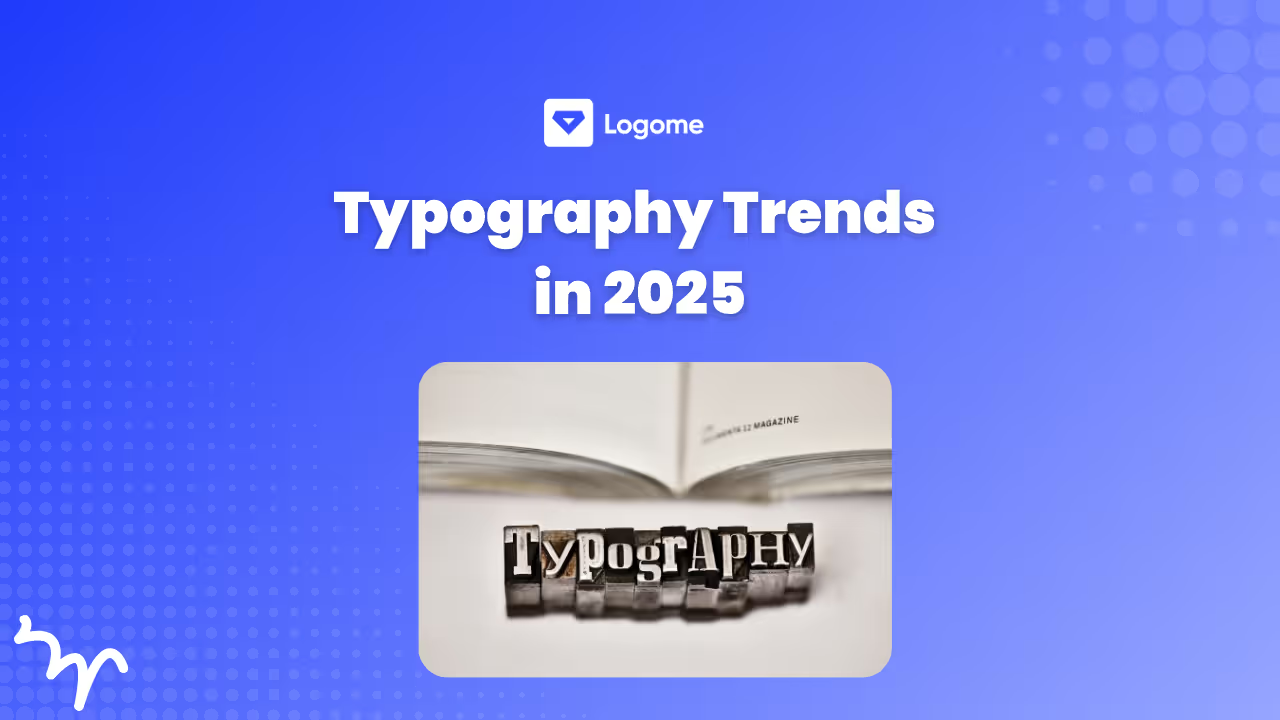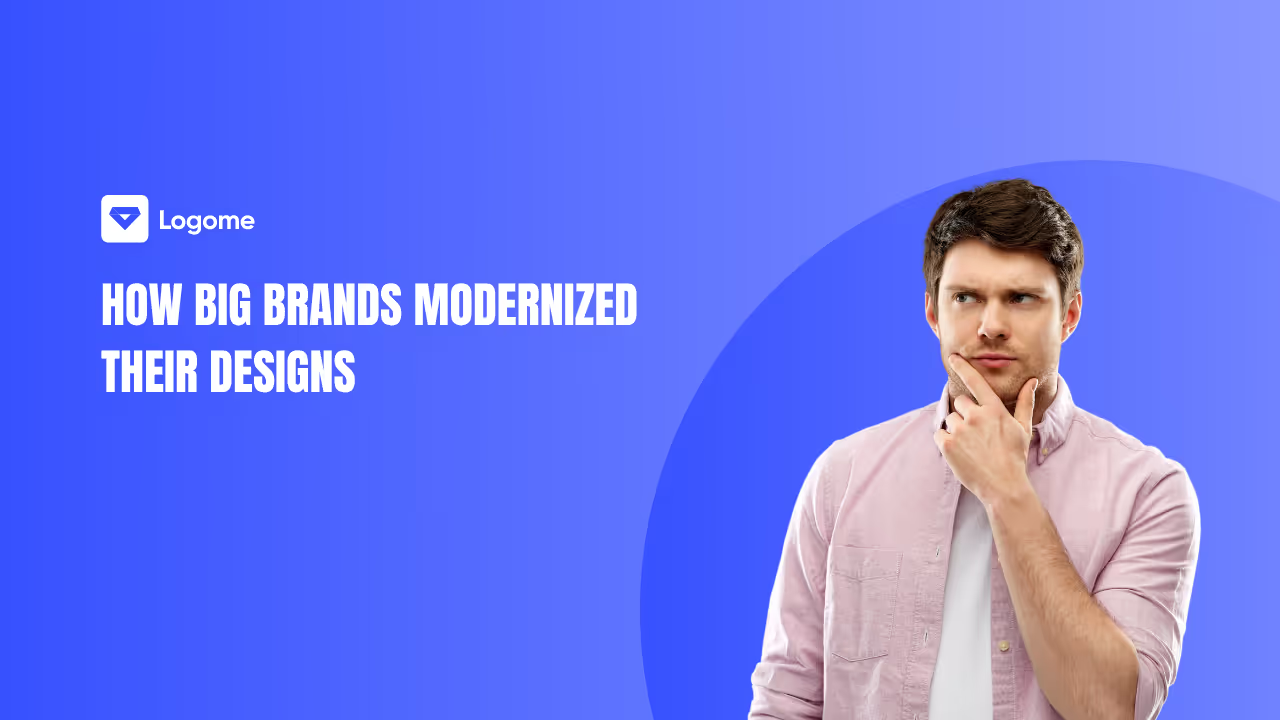Best Display Fonts for Logo Creation and Branding
Discover the best display fonts for logo creation and branding. Explore 10 standout fonts renowned for their elegance, creativity, and impact in diverse industries.
Discover the best display fonts for logo creation and branding. Explore 10 standout fonts renowned for their elegance, creativity, and impact in diverse industries.

Crafting a memorable logo involves meticulous attention to typography, and choosing the right display font can significantly impact a brand's identity. Display fonts are characterized by their expressive, ornate, and often dramatic letterforms, making them ideal for creating bold statements and leaving lasting impressions. In this guide, we explore 10 of the best display fonts that elevate logo design, each offering unique styles and versatile applications across various industries.
Display fonts are typefaces designed to make a bold visual impact. Unlike traditional serif and sans-serif fonts, display fonts feature exaggerated letterforms, intricate details, and distinctive personalities. They are primarily used for headlines, titles, and logos where emphasis, creativity, and personality are paramount. Display fonts come in a wide range of styles, from elegant and sophisticated to playful and bold, offering designers ample opportunities for creative expression in logo design.
Bodoni is renowned for its high contrast between thick and thin strokes, creating a sophisticated and elegant appearance. Its sharp serifs and geometric proportions make it a timeless choice for luxury brands and editorial logos.
Didot is characterized by its high contrast, hairline serifs, and vertical stress, exuding a sense of elegance and modernity. Its distinct letterforms make it perfect for brands looking to convey sophistication and style.
Trajan is characterized by its uppercase Roman letterforms inspired by ancient inscriptions. Its classical elegance and monumental feel make it a popular choice for brands aiming to convey authority and prestige.
Avant Garde is characterized by its geometric shapes and clean lines, offering a modern and artistic appearance. Its distinctive letterforms make it ideal for brands looking to convey creativity and innovation.
Brush Script is a casual, flowing script typeface that mimics handwritten brush strokes. Its fluid and dynamic appearance conveys a sense of creativity, warmth, and personalization.
Neutraface is a geometric sans-serif typeface inspired by architectural lettering. Its clean lines, subtle curves, and modernist design evoke a sense of sophistication and urbanity.
Playfair Display is an elegant serif typeface with high contrast and distinctive letterforms. Its classical appearance and literary charm make it ideal for brands aiming to convey sophistication and storytelling.
Helvetica is a widely used sans-serif typeface known for its neutrality, clarity, and universal appeal. Its clean lines and balanced proportions make it suitable for brands aiming to communicate simplicity and reliability.
Futura is a geometric sans-serif typeface known for its clean lines, minimalistic appearance, and modernist design. Its simple and legible letterforms convey a sense of modernity and forward-thinking.
Avant Garde Gothic is a geometric sans-serif typeface known for its clean lines and distinct letterforms. It offers a modern and minimalist appearance, making it suitable for brands seeking a bold and contemporary identity.
Pairing display fonts with complementary typefaces enhances visual interest and readability in logo design. Here are some font types that work particularly well with display fonts:
Selecting appropriate colors enhances the impact and readability of display fonts in logo design. Here are some color usage suggestions and rationales:
Display fonts have a rich history that spans centuries, evolving alongside advancements in printing technology and cultural shifts in design aesthetics. Initially, display typefaces emerged during the era of metal type, where ornate and expressive letterforms were crafted by hand. These early fonts were used primarily for titles, posters, and advertisements, emphasizing visual impact over readability. With the advent of industrialization and the rise of mass printing, display fonts became more standardized yet retained their decorative qualities.
In the digital age, the evolution of display fonts accelerated with the introduction of scalable typefaces and graphic design software. Designers could now experiment with a broader range of styles, from vintage revivals to futuristic designs, catering to diverse branding needs. Today, historical influences still inspire modern display fonts, blending tradition with contemporary design sensibilities. The continuous evolution of display fonts reflects their enduring role in visual communication, adapting to new technologies while preserving their expressive and artistic heritage.
Iconic logos often owe their memorability in part to the strategic use of display fonts. One such example is Coca-Cola's logo, which has maintained its distinct identity since its creation in the late 19th century. The Spencerian script used in the logo embodies a sense of heritage and timeless elegance, aligning perfectly with Coca-Cola's brand values of tradition and quality. This case exemplifies how a well-chosen display font can reinforce brand identity and establish emotional connections with consumers.
Another notable case study is the Nike logo, known as the "Swoosh," designed by Carolyn Davidson in 1971. The logo's custom typeface, featuring smooth curves and dynamic movement, symbolizes athleticism and innovation. Its simplicity and versatility have enabled Nike to maintain a strong visual presence across diverse marketing channels and product lines. These case studies underscore the strategic importance of display fonts in creating logos that resonate with audiences, evoke specific emotions, and endure through changing trends.
Typography trends in logo design continually evolve, reflecting broader shifts in design aesthetics, technology, and cultural influences. Currently, minimalist and geometric display fonts are trending, favored for their clean lines and contemporary appeal. Brands across industries are opting for simplified typography to convey clarity, sophistication, and a modern outlook.
Moreover, custom and handcrafted display fonts are gaining popularity, as they offer unique identities and personalized touchpoints for brands seeking differentiation in crowded markets. These fonts evoke authenticity and craftsmanship, appealing to consumers' desire for genuine connections with brands. Additionally, retro and vintage-inspired display fonts continue to resonate, tapping into nostalgia and cultural references to convey authenticity and timelessness.
As digital platforms become increasingly integral to brand communication, responsive typography is another emerging trend. Designers are focusing on ensuring readability and visual consistency across various devices and screen sizes, enhancing user experience and brand visibility. These trends highlight the dynamic nature of typography in logo design, where innovation and tradition converge to create compelling brand narratives.
In the digital era, typography tools and resources empower designers to explore and integrate display fonts effectively into their logo projects. Graphic design software such as Adobe Creative Cloud and Sketch provide robust typography tools, allowing designers to manipulate letterforms, kerning, and spacing with precision. These tools support experimentation with different font styles and facilitate seamless integration into design workflows.
Online repositories and marketplaces, such as Google Fonts, Adobe Fonts, and MyFonts, offer vast collections of display fonts for both commercial and personal use. These platforms provide searchable databases, enabling designers to discover fonts based on style, popularity, and licensing requirements. Additionally, font pairing tools and typography guides assist designers in selecting complementary typefaces that enhance visual harmony and readability in logo designs.
Furthermore, typography communities and forums foster collaboration and knowledge-sharing among designers worldwide. These platforms facilitate discussions on typography trends, font recommendations, and best practices, enriching the design community's collective expertise. As typography continues to evolve, accessible tools and resources empower designers to innovate and create impactful logo designs that resonate with audiences.
Typography plays a crucial role in digital branding strategies, influencing brand perception, user experience, and engagement across digital platforms. Responsive typography ensures legibility and visual consistency across diverse devices and screen resolutions, enhancing accessibility and user interaction. Brands leverage custom display fonts to differentiate themselves in competitive digital landscapes, reinforcing brand identity and storytelling through distinctive typographic elements.
Moreover, dynamic typography in motion graphics and interactive designs enhances user engagement by conveying narratives and guiding user interactions effectively. Brands utilize typographic animations, variable fonts, and interactive typefaces to create immersive digital experiences that resonate with modern consumers. Additionally, accessible typography practices, such as text contrast ratios and font size adjustments, ensure inclusivity and compliance with web accessibility standards, accommodating users with disabilities.
As digital branding evolves, typography continues to evolve as a powerful tool for expressing brand personality, values, and visual identity across digital touchpoints. By leveraging responsive typography and innovative design techniques, brands can establish cohesive digital experiences that captivate audiences and drive meaningful connections.
Font pairing is a critical aspect of logo design that requires careful consideration of typography principles and visual harmony. One common challenge is achieving balance between display fonts and supporting typefaces, such as sans-serifs or serifs. While display fonts emphasize visual impact and personality, pairing them with simpler, neutral fonts ensures readability and maintains a cohesive design aesthetic.
Another consideration is cultural and contextual relevance when selecting fonts for global brands or diverse audiences. Fonts carry cultural connotations and symbolism that can influence how a brand is perceived across different regions and demographics. Designers must evaluate cultural sensitivities and preferences to ensure fonts resonate authentically with target audiences while reinforcing brand values and messaging.
Furthermore, scalability and versatility are essential factors in font pairing for logo design. Fonts must remain legible and impactful across various applications, from digital interfaces to print media, without compromising visual integrity. Conducting thorough testing and mockups helps designers assess font readability, hierarchy, and overall aesthetic coherence in different contexts.
Additionally, customizing fonts or modifying letterforms requires careful consideration to maintain brand consistency and readability. Designers may opt for subtle modifications to align fonts with specific design requirements while preserving their original characteristics and visual appeal.
Overall, font pairing in logo design involves strategic decision-making and creative exploration to achieve harmonious typography that enhances brand identity and effectively communicates with target audiences. By addressing these challenges and considerations, designers can create memorable and visually compelling logos that resonate with consumers and strengthen brand recognition.
Crafting a distinctive logo hinges on the meticulous selection of typography, where the choice of display font plays a pivotal role in shaping a brand's identity. Display fonts, celebrated for their expressive and ornate letterforms, offer a canvas for creativity and bold statements across various industries. In this guide, we've explored ten standout display fonts renowned for their versatility and impact in logo design.
From the timeless elegance of Bodoni and Didot to the authoritative presence of Trajan, each font carries its own unique charm and applicability, catering to diverse aesthetics from luxury and fashion to creativity and innovation. Fonts like Avant Garde and Brush Script inject personality and warmth, while Neutraface and Helvetica embody modernity and clarity. These selections illustrate how different fonts can convey specific brand values, whether it's sophistication, creativity, or minimalism.
Incorporating display fonts effectively requires not only aesthetic consideration but also strategic alignment with brand identity and audience perception. By balancing ornateness with readability and experimenting with complementary typefaces and color schemes, designers can create logos that resonate deeply and endure. Ultimately, the art of logo creation thrives on the synergy between typography, brand ethos, and visual storytelling, ensuring that every logo becomes a compelling ambassador of its brand's narrative and aspirations.



Discover how 500,000+ businesses and creators are using our AI logo maker in their Logo creation.



